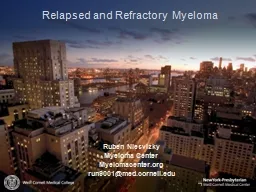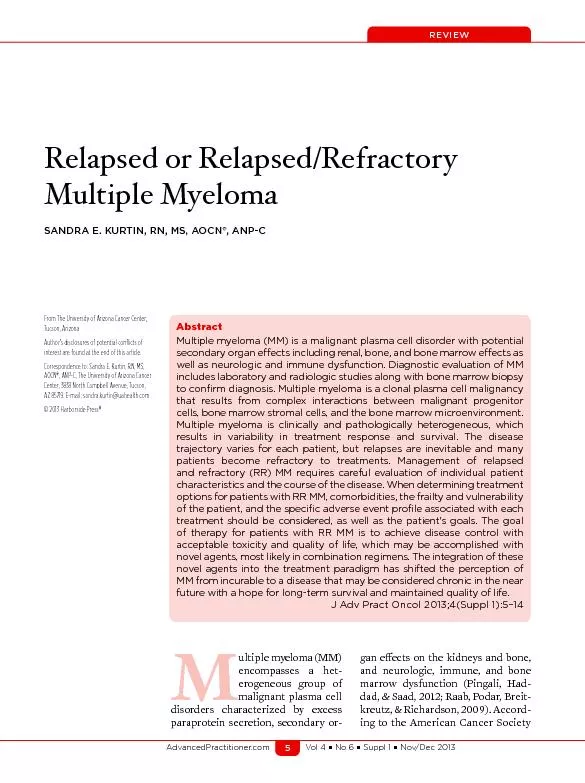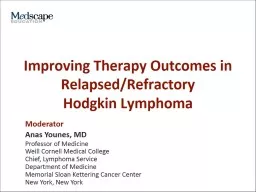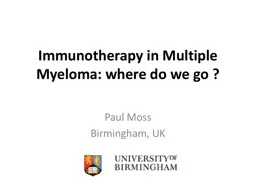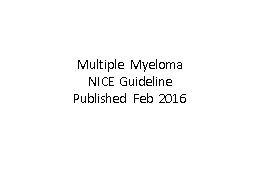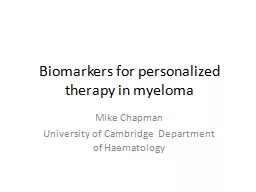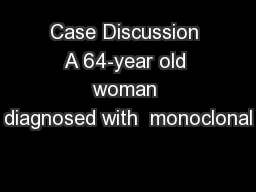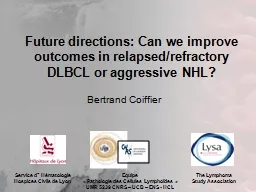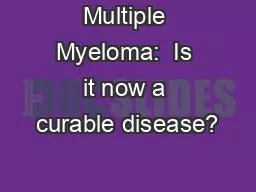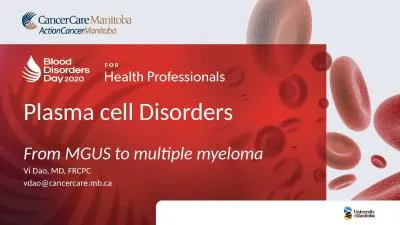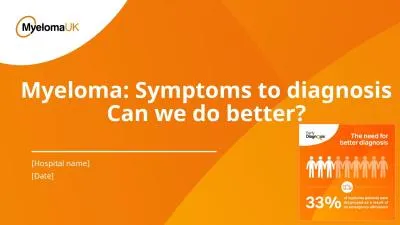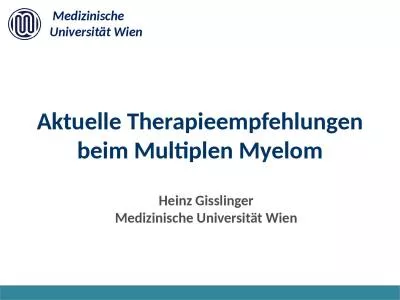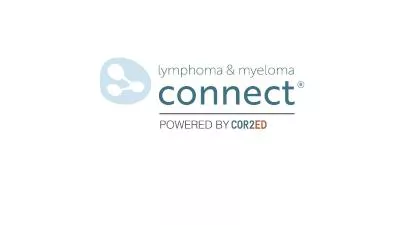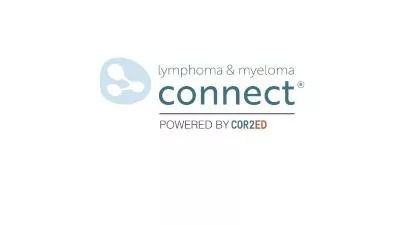PPT-Relapsed and Refractory Myeloma
Author : jane-oiler | Published Date : 2016-12-10
Ruben Niesvizky Myeloma Center Myelomacenterorg run9001medcornelledu Multiple Myeloma Natural History of Disease Durie B International Myeloma Foundation Concise
Presentation Embed Code
Download Presentation
Download Presentation The PPT/PDF document "Relapsed and Refractory Myeloma" is the property of its rightful owner. Permission is granted to download and print the materials on this website for personal, non-commercial use only, and to display it on your personal computer provided you do not modify the materials and that you retain all copyright notices contained in the materials. By downloading content from our website, you accept the terms of this agreement.
Relapsed and Refractory Myeloma: Transcript
Download Rules Of Document
"Relapsed and Refractory Myeloma"The content belongs to its owner. You may download and print it for personal use, without modification, and keep all copyright notices. By downloading, you agree to these terms.
Related Documents

